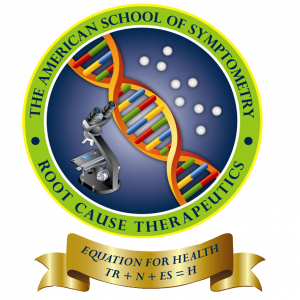
Dr. Maxwell Nartey
Professor of Symptometric Science, American School of Symptometry, NFP
What is asthma?
It is respiratory stress that poor electricity distribution in the lungs causes.
Why does asthma occur?
Asthma occurs because the lungs have become a low-pressure area; and, in the human body, stasis or inertia occurs only in low-pressure areas.
Stasis indicates stagnation; and inertia indicates lack of movement. Blood is circulating, but muscle proteins are not. It is the non-availability of electricity that causes stasis and inertia.
Electricity is not available in the lungs in large amounts because metals, chemicals, etc. keep blocking its production and circulation. Electricity is produced in the nucleus by the electrons of sodium and potassium, but the metals and the chemicals that are causing stasis or inertia are making it difficult for the muscle proteins to have it.
Importance of electricity
Why is electricity important? It is important because thermal energy and electrical energy are the foundation of the human body. Nothing in a person will be produced without water, nutrients, salt, glucose, oxygen, heat and electricity.
Stagnation or inertia makes it extremely difficult for the red blood cells, the white blood cells, the platelets, cortisol, muscle proteins, and neurotransmitters to circulate. Then, inertia gets metals stuck in the lungs.
Metals will denature or destroy the enzymes that accelerate the production of the muscle proteins that expand and contract the bronchioles and the diaphragm. These muscle proteins are called titin, elastin and fibrillin.
It is the non-production of titin, elastin and fibrillin that will cause a lot of tension and friction when the bronchioles are trying to expand or contract. It is this frequent tension and friction that will cause the turbulence which has become known as asthma (bronchospasms).
Other factors that cause bronchospasms
The other factors that can turn the high-pressure area in the lungs into a low-pressure area include: casein phosphoprotein, vaccines, metals in pharmaceutical drugs, metals in atmospheric pollution, sulfites, and cold items like ice, and ice cream. This change from high-pressure area to low-pressure area will hinder blood flow, gas exchange, granulation, electron exchange and the structure of the lungs’ arteries, arterioles and capillaries.
Types of asthma.
There are two kinds of asthma: 1) congenital asthma and 2) contemporary asthma. Congenital asthma is the kind of asthma with which a person is born. Contemporary asthma is contracted after birth.
The other subtypes of asthma include: vaccine-induced asthma, heat-induced asthma, pollen-induced asthma, sulfite-induced asthma, mucin-induced asthma, and tension asthma.
Generally, it is the children who were born prematurely, with a lot of enzyme deficits; and with underdeveloped lungs, who tend to become asthmatic. Most children who were vaccinated did not become asthmatic because they had enzymes to spare.
Origin of metals
Where do the metals that cause bronchospasms come from? They are in vaccines, nuts, seeds, or in cereals. Also, they are in the air we breathe as environmental pollutants; they are in unsafe tap water as lead; they are in the raw leaves that are eaten as salad; and they are in liquor.
Other demerits of metals
If metals do not cause asthma in one person, they could cause swallowing difficulties in another person; chest tightness in a third person; chronic constipation in a fourth person, fast blinking or delayed blinking in a fifth person, frequent coughing in a sixth person, and so on and so forth.
Metals are non-nutrients; and it is because they are non-nutrients that they displace nutrients from a person’s tissues. The displacement of nutrients will cause nutrient deficiencies.
Then, it is the deficiency of specific nutrients that would make an asthmatic sensitive to sulfites, MSG (monosodium glutamate), dust, extreme heat, humidity, strong spices, the smell of fresh paint, perfume, cologne and flowers.
Asthma exacerbators
Exacerbators are the factors, the agents or the products that make a disease worse. Asthma exacerbators include: sulfites, extreme humidity, chemicals, and milk phosphoproteins or egg phosphoproteins.
Sulfites are routinely sprayed on fruits and on vegetables in supermarkets, hotel restaurants, and other restaurants. Phosphoproteins are in eggs, and in milk, as well as in milk products, especially in ice cream, yogurt and kefir. The chemicals that could make asthma worse are in: perfumes, colognes, strong spices, monosodium glutamate, and fresh paint.
Importance of ancillary enzymes
Parents may not have asthma, but some of their children may have asthma. Also, mother and child can have asthma. The question is why? The answer lies in the non-production of ancillary enzymes.
Asthma will never occur in a person who produces ancillary enzymes in their lungs, regardless of where they live or whether they are vaccinated or not.
Curing asthma
Symptometry has cured countless cases of asthma. How does Symptometry cure asthma? It cures asthma by enabling the asthmatic’s cells to produce ancillary enzymes. It is these ancillary enzymes that will speed up the production of chemical liquefiers, sulfite liquefiers and metal liquefiers.
It is because the removal of metals, chemicals and sulfites has allowed the bronchioles and the diaphragm to produce titin, elastin and fibrillin, that the diaphragm and the bronchioles can now expand and contract without causing any tension and turbulence. It is the ease with which they can expand, stretch and contract that facilitates breathing at night, and during the day, regardless of the weather and circumstances.
Also, by turning a low-pressure area back into a high-pressure area, speed, acceleration and momentum would automatically replace inertia and stasis in the lungs. As a result, many channels will reopen.
The reopening of the cortisol channel will allow cortisol to circulate to prevent or cure inflammation. The reopening of the magnesium channel will allow magnesium to flow to the lungs and supply thermal energy, and the magnesium electrolyte.
The magnesium electrolyte would team up with the calcium electrolyte, the chloride electrolyte, the sulfite electrolyte, the phosphate electrolyte and bicarbonate electrolyte to increase the amount of electricity that sodium and potassium are producing in the nuclei.
There will be so much electricity that granulation will resume. It is granulation that will facilitate tissue renewal in the lungs, as well as the production and the circulation of titin, fibrillin and elastin. Actin will slide past myosin again, and there will be no more bronchospasms. This is how Symptometry has been curing every case of asthma, bronchitis, emphysema, shortness of breath, coughing, and difficulty exhaling.
Curing asthma and respiratory difficulties allowed Symptometry to prevent many asthmatic women from dying during childbirth. Maternal death as a result of asthma and eclampsia, has been a serious problem for thousands of years in every country on this planet. Not anymore. Symptometry has now put it to rest.
It is better to know what causes asthma than to just treat its symptoms.
© Copyright 2021, The American School of Symptometry, NFP. No part of this publication may be reproduced or transmitted in any form or by any means, electronic or mechanical, including photocopying, recording, or by any information storage and retrieval system without the written permission of The American School of Symptometry, NFP. Library of Congress copyright number Txu 1-621-370, Washington D.C.


 Previous Post
Previous Post Next Post
Next Post